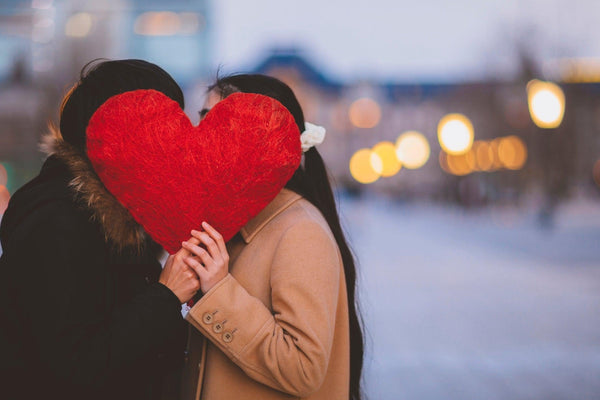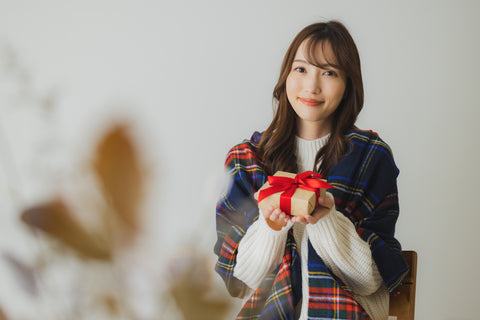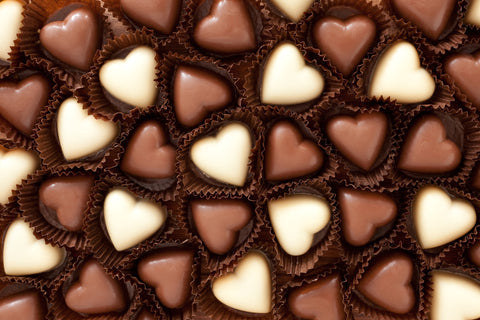
Jump to:
Oh Valentine’s Day. What comes to your mind when you think about Valentine’s Day? Do you think about chocolate? Roses? A fancy candle-lit dinner? While these may be aspects of Valentine’s Day for many lucky people out there, Valentine’s Day is celebrated and recognized differently around the world.
Have you ever wondered what Valentine’s Day in Japan is like? In this article, we’re going to give you the lowdown on Valentine’s Day in Japan and how it’s celebrated. We’ll also introduce ‘White Day’ which accompanies Valentine’s Day.
What Is Valentine’s Day In Japan?

Valentine’s Day in Japan, while thought of as quite a romantic day similar to other countries, might not be celebrated exactly how you think. While yes, chocolate is definitely involved in Valentine’s Day in Japan (thankfully), the emphasis is more on women gifting chocolate to men.
Yes, that’s right, as opposed to in the West where women are often gifted chocolates, flowers, and even extravagant gifts sometimes for Valentine’s Day, in Japan, women give chocolates to men. These men could be their romantic partners, their coworkers, their bosses, or even just their platonic friends. Valentine’s Day has become especially popular among students in middle and high school, as they can use this opportunity to confess to their crush.
The point is that men get chocolates for Valentine’s Day. (Well, female friends can also receive chocolate, but the point is that on Valentine’s Day in Japan, women gift chocolate.)
Japanese Valentine’s Day History
Valentine’s Day is believed to have become popularized in Japan around the 1950s, but really confectionary shops have been holding chocolate campaigns since the 1930s. Originally, these chocolate campaigns were targeted towards foreign residents in Japan but eventually became more popular with Japanese women. These campaigns were marketed mainly towards women, especially those who were in relationships or married. And thus, that’s why the concept of giving chocolates to men became a thing for Valentine’s Day in Japan.
Different Types Of Chocolate For Valentine’s Day

In Japan, there are different ‘levels’ of chocolate giving when it comes to Valentine’s Day. We’ll outline each type below.
Honmei Choco
Honmei Choco which translates to “favorite chocolate” is exclusively given to significant others or someone that a woman is interested in. These chocolates are often handmade (nama choco is a popular kind of chocolate to make), but sometimes women opt to buy nice chocolate from department stores too. Obviously since women are giving this type of chocolate to their significant other or crush, they want to make it as special as possible.
Giri giri Choco
Giri giri Choco roughly translates to “obligation chocolate” meaning that this category of chocolate is usually given to coworkers, superiors, male friends, and even family members. Nicely packaged store-bought chocolate is the go-to for giri giri choco.
Tomo Choco
Tomo choco or “friend chocolate” is exactly what its name implies. Chocolate given between friends. Women gift tomo choco to both their male and female friends.
Gyaku Choco
Gyaku choco which means “reverse chocolate” is chocolate given from a man to a woman. Shocking! However, this is thought to be uncommon in Japan.
Jibun Choco
Jibun choco means “chocolate for yourself” which is yes, chocolate that you buy or make for yourself. Because everyone deserves to eat chocolate on Valentine’s Day.
White Day

So men can’t be the only people to receive chocolates for Valentine’s Day right?! That certainly would be a catastrophe. Yes, there is indeed a day dedicated to returning the favor of Valentine’s Day chocolate, and that day is called White Day.
White Day happens exactly one month after Valentine’s Day on March 14th, and is basically a reply day for Valentine’s Day. Men/people who received chocolate on Valentine’s Day are expected to return the favor by gifting chocolate to women/Valentine’s Day chocolate givers.
White Day was not really a thing in Japan until the 1980s, and the color white is thought to be associated with purity, especially when it comes to innocent teenage love in Japanese culture.
One interesting fact about White Day is that men are expected to give chocolates that are roughly twice or three times the value of what they received on Valentine’s Day. Not returning the favor by gifting chocolate on White Day is considered very rude, and can even be perceived as breaking off the relationship (if the chocolate was honmei choco or gifted romantically).
Buying Japanese Chocolate

Even if you can’t make it to Japan in time to try all the Japanese chocolate goodies, don’t give up hope! You can find all of the best Japanese chocolates right here and have them shipped straight to your door from Japan.
What do you think about Valentine’s Day in Japan? How does it differ from Valentine’s Day in your country? We’d love to know in the comments below.


0 comments